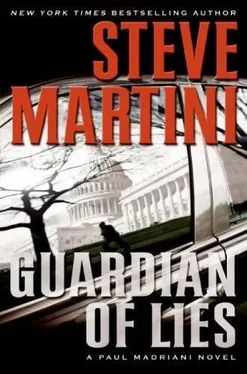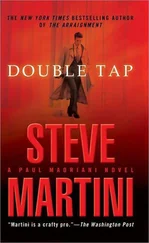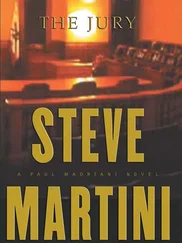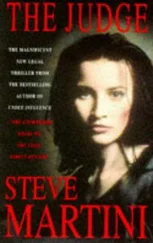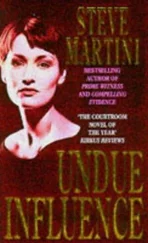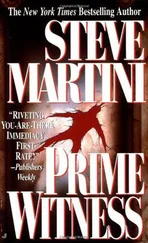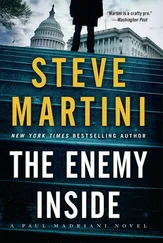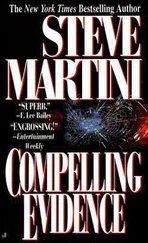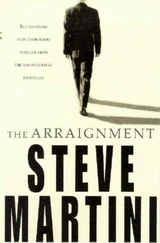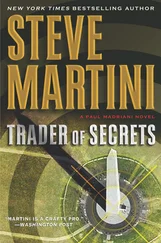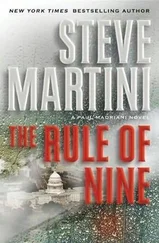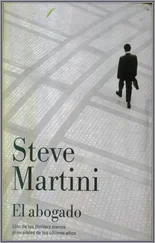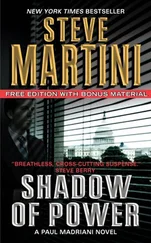“Maybe she didn’t forget,” said Templeton. “Maybe someone else told her he’d take care of it for her. Someone who knew a lot more about crime scene evidence than she did.”
“Madriani,” said Howser.
“That would explain why the Arizona Highway Patrol didn’t find the knife used to jimmy the drawers when they arrested her, or Pike’s computer, or the other missing coins, why she went down the front driveway straight into the security camera when whoever helped her went out through the side yard, through the hole in security and over the fence. It would explain a lot of things, wouldn’t it? And by the way, I wouldn’t put too much faith in the theory that Solaz plunged the dagger into Pike’s chest.”
“That’s the linchpin of your case,” said Howser.
“She may have handled the letter opener, but you missed something,” said Templeton.
“What’s that?”
“A little twist on one of the details that came in late, courtesy of the people in the crime lab. Have you ever read the book entitled A California Gold Rush History , by David Bowers?”
“No.”
“Neither have I,” said Templeton. “I’m told it’s a tome, what you would call a substantial read, one thousand and fifty-five pages in hardcover. Single volume weighs in at more than eleven pounds. It’s a big sucker. And according to forensics, whoever left the dagger in Pike used that particular book to pound it into his chest. Now can you see a petite little thing like Katia Solaz holding the dagger in one hand while she swings a big book like that in the other?”
“Now that you mention it,” said Howser, “no. When did you find this out?”
“Yesterday morning. Forensics found a strange indentation in the book’s cover when they were processing the crime scene. It seems the dimple in the cover matches precisely the shape and contour on the end of the dagger’s handle. Just the way you might want to hit it if you wanted to preserve somebody else’s prints on the handle.”
“So you haven’t turned this over to the defense yet?”
“Not yet. Of course I will-sooner or later,” said Templeton.
“I have to say, that puts a major focus on the other player,” said Howser. He meant the unidentified codefendant. “And you can bet the second we turn it over, Madriani will jump on it and claim that this is solid evidence that some other dude did it.”
“And he’ll be right,” said Templeton. “ He did it. He set her up nine ways from Sunday. She may have invited him in on the party, told him what was in the house, but he took over when he came. Do you have any idea what the value of the gold is that’s missing?”
“No,” said Howser.
“Just under 146 pounds, it would be a shade under 1.8 million dollars, and that’s just by weight. If you could sell the coins at collector’s value, who knows, you could probably multiply that by a factor of three or four. That’s what they tell me, anyway.”
“I’d say that’s a pretty good motive for murder,” said Howser.
“It could certainly beef up a private pension plan. Anything on that end yet?” said Templeton.
“No. We’re not going to know that until we get a subpoena for Madriani’s bank records. And we’re not going to be able to do that until we go public with the court and open an active investigation on him. Maybe you can get the feds to go online and take a peek at his bank records.”
“He’s not going to sell the gold and put the cash in a bank account,” said Templeton. “Too much money and too many records. He’d have to pay taxes and explain where he got all his sudden wealth on a return. If he melts it down, and I have to assume he probably already has, he’s going to put it somewhere safe, where it can’t be found or traced, and sit on it until things cool off.”
“Still, it’s hard to believe that a seasoned lawyer who has seen forensics play out in court a thousand times would miss as many details as we have here,” said Howser.
“It’s one thing to study it in a courtroom in the cold light of day. It’s another to live it,” said Templeton. “Can you imagine the frenzied thoughts that crowd the mind after killing someone, in this case two people? And then there’s all the glitter from that gold to get in your eyes. That’s how he managed to leave the pen behind. A thirty-cent ballpoint pen you can buy by the bushel with your firm name and address printed on them. Madriani wrestles with Pike and the pen ends up on the floor, kicked under the desk. Go figure.”
“I still think you should have allowed us to ask him about that,” said Howser.
“Why, so he could lie to us again? Make up another story? When you first questioned him, you asked him whether he’d ever been to Pike’s house. He said no. You asked him if Solaz had ever been to his office and he said no. You asked him if their meeting at the grocery store was the only time they ever met or talked before she was arrested, and what did he say? He said yes. Now we know they talked by phone at least one other time and had drinks at the restaurant out in front of his office in Coronado on that same day. He had plenty of opportunities to tell us the truth, but he didn’t,” said Templeton. “Would you like to take bets on what a jury’s going to say about how that pen found its way under Pike’s desk? I could use the money.”
“No, that’s all right,” said Howser. “They’re already taking enough out of my paycheck as it is.”
Suddenly Templeton’s office door shot open. One of the other prosecutors stuck his head in.
“What is this, no-knock day?” said Templeton.
“Have you guys heard the news?”
“No, but I’m sure you’re gonna tell us,” Templeton said, glaring at him.
“Somebody just hit the sheriff’s bus on its way in from the women’s jail out at Santee. Word is, the driver and the guard are dead, smoke and explosions everywhere.”
Templeton dropped his briefcase on the floor.
“It’s on Fox News and CNN right now, aerial shots.”
“What are they saying?” said Templeton.
“Reporters are speculating that it may have been a botched attempt to spring one of the inmates from the bus. The area around the freeway looks like a war zone.”
Much of the inside of the bus was charred. Most of the officers, the sheriff’s tactical squad as well as the agents from the FBI’s violent crimes task force, had only seen training photographs and films of buses that had been hammered by terrorists in the Middle East.
None of them had ever seen anything like this on American soil. And while they had trained for it, the presumed targets were always soft, inner-city commuter buses and trains, not a locked-down sheriff’s transport bus. In a way this was worse. Once the door had been blown, none of the passengers on board had a chance of escape. They were chained to their seats.
A line of ambulances long enough that no one bothered to count them lined up under the freeway overpass, waiting their turn as paramedics and police worked through the bodies on the bus.
The bomb squad gingerly checked the box truck for explosives. Two of the FBI agents had already been badly injured in the blast from the getaway van, and authorities were taking no more chances. The box truck had to be cleared before moving it so that ambulances could pull up on the ramp.
“I don’t, sir.” One of the FBI agents was on the phone with Thorpe, in Washington. “They’re on the bus looking for both of them now. I know. I know. There’s nothing the hostage rescue team could have done, believe me. They made no contact with any authorities, no evidence of any interest in negotiating anything. When the sheriff’s department tried to communicate with them through the speaker on one of the squad cars up at the top of the ramp, the assailants just opened on them. The minute they blew the door off the bus, they just entered and started shooting people. We had no choice, we had to move in.
Читать дальше
